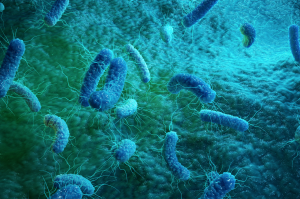Brings Plenty: The difference between romanticizing and raising awareness for mental illness
“13 Reasons Why” is an example of why romanticizing mental illness in the name of “awareness” is harmful and why it needs to stop.
ASSOCIATED PRESS
May 6, 2019
“13 Reasons Why” was released two years ago and was quickly met with controversy. The TV show deals with such heavy topics as suicide, sexual assault, and depression. Many mental-health educators and psychologists warned the creators that so-called “copycat” suicides were likely to occur. These warnings ended up coming to light just as the experts predicted they would: suicide rates among teenagers spiked after the release of the show.
According to a study funded by the National Institutes of Health, there was a 28.7 percent increase in suicide among youths ages 10-17 after March 2017, when the show first aired. In the five-year period examined by researchers, the number of suicides was greater than was previously seen in a single month. There were 195 more youth suicides than was previously expected based on past trends.
While I don’t think people watching shows about suicide are necessarily going to kill themselves, I do think writing about these touchy topics can cause a lot of harm if not handled well.
RELATED: Newby: How I made this school year the best it could be
The show was under scrutiny from its first season when it graphically depicts the suicide of a character named Hannah. The American Foundation for Suicide Prevention warned that showing such a graphic image of suicide might lead to a sort of “sensationalization” of the act and might be particularly damaging to those who are already at-risk or have suicidal ideations.
Aside from this, the show graphically depicts sexual assault in its second season. This is extremely triggering for survivors of sexual assault, but the show does nothing for those who’ve gone through that trauma.
The target audience for “13 Reasons Why” appears to me to be those between the ages of 12-16. Kids in this age bracket are extremely impressionable, and the message the show sends out is very toxic. The message is that suicide is an answer to your problems and that recovery isn’t an option to even consider, as depicted by Hannah in the show.
It also romanticizes such issues as depression and suicide, making them seem much more beautiful and poetic than they really are. This is particularly harmful to younger viewers, especially those who might struggle with mental-health issues or suicidal ideation. Seeing suicide being shown as a viable option is a terrible thing for young, impressionable minds because they’re going to internalize that. They might begin to think that suicide is an option for them, which it absolutely never should be.
Raising awareness of mental health shouldn’t include graphic images of suicide and sexual assault or glamorizing mental illness. Mental-health awareness is showing what mental illness looks like in a safe, smart way without purposefully triggering those affected or spreading misconceptions about mental illness. Raising awareness is bringing up difficult topics tactfully and with precision, while showing respect to those who are or have been affected by these issues. Writing about delicate topics such as this requires tact and care, which doesn’t seem to be the case in “13 Reasons Why.” As said in the warning message given by the National Association of School Psychologists: “Suicide is not a solution to problems.”
If you or someone you know may be considering suicide, contact the National Suicide Prevention Lifeline at 1-800-273-8255 (En Español: 1-888-628-9454; Deaf and Hard of Hearing: 1-800-799-4889) or the Crisis Text Line by texting HOME to 741741.






